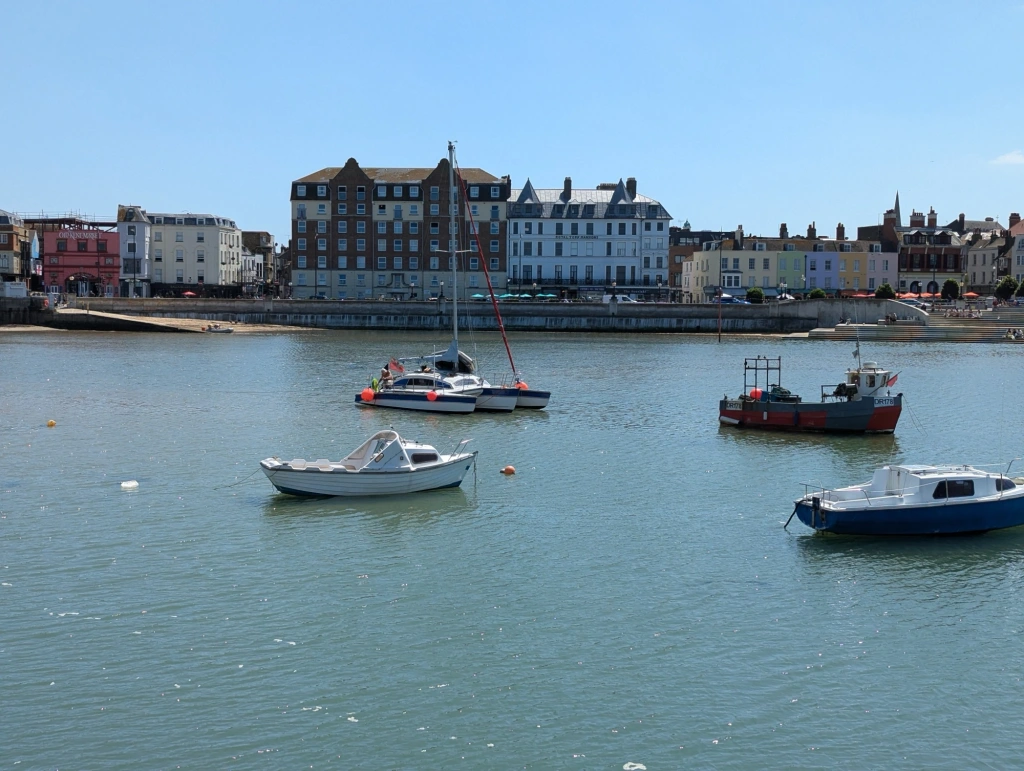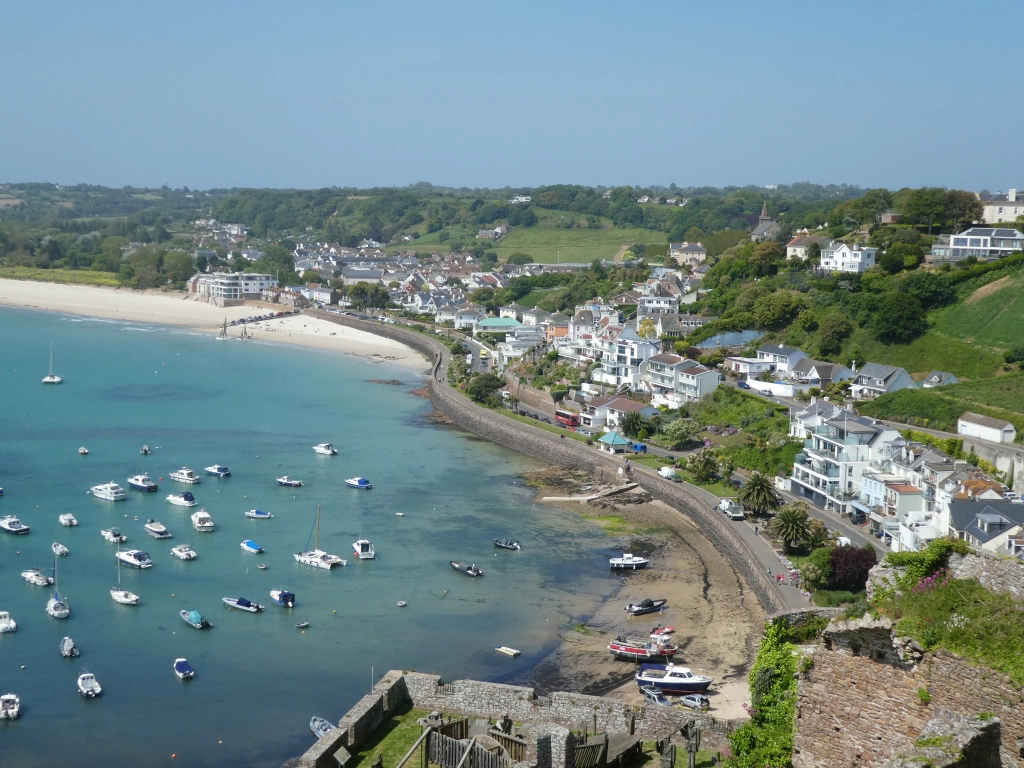Ramsgate is an attractive seaside town situated in northern Kent. Along with its near neighbours Broadstairs and Margate, these three towns are collectively referred to as the Isle of Thanet. Whilst in the past Thanet was separated from the mainland it is no longer an island. Ramsgate boasts a gorgeous harbour, Regency architecture, quaint streets and a flourishing arts scene, making the town ideal for a short break or a day out at the seaside.
Getting there:
By car: From the M25, take the M2 which leads into East Kent until it becomes the A299 (Thanet Way). From there, follow signs into Ramsgate. For rail travellers, Ramsgate is just 75 minutes from London by the high speed service with Southeastern from St. Pancras. Other services also operate from London Victoria and Charing Cross.
nExploring Ramsgate:
Ramsgate Royal Harbour
We hadn’t visited Ramsgate before and on arrival, were immediately drawn to the picturesque harbour. I suggest starting your tour of the town by taking a walk around this pretty harbour and marina. Ramsgate harbour was bestowed Royal status by King George IV as a gift for the hospitality he received when visiting the town in 1820 and it remains the only Royal harbour in the UK and became a favourite destination of Queen Victoria.
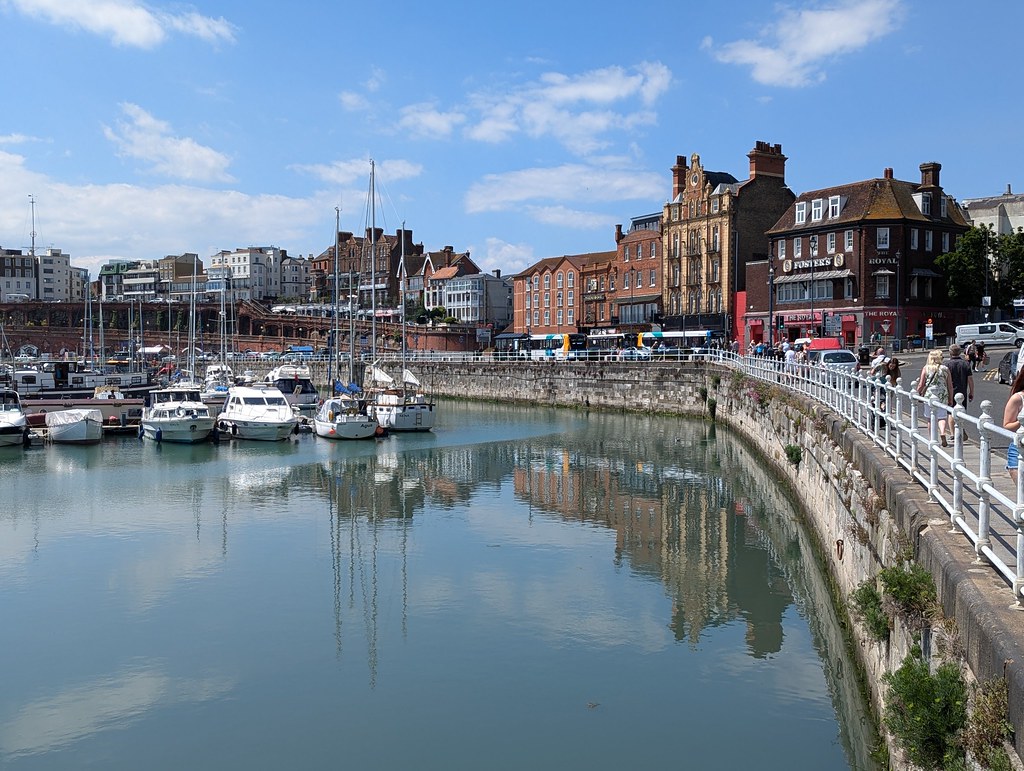
The harbour first opened in 1850 and retains some fine Victorian architecture including a clock tower, harbour buildings, port offices and light houses. During the Second World War the harbour was a staging post for the Little Ships of Dunkirk when approximately 850 private boats sailed from Ramsgate to Dunkirk in northern France between 26th May and 4th June 1940 as part of Operation Dynamo. Their selfless action helped to rescue more than 336,000 British and Allied soldiers who were cut off and surrounded by German troops on the beaches at Dunkirk.
Stroll around the pretty marina to explore the east and west piers and the inner harbour. Facing the harbour is the diminutive 19th-century Sailor’s Church, which was built for the sailors that crewed Ramsgate’s fishing fleet. The church was constructed in 1878 by Canon Eustace Brenan, who saw the need for spiritual guidance for men and boys of the sailing smacks. There were rooms above the church for the fishermen’s apprentices and next door is the aptly named Home for Smack Boys.
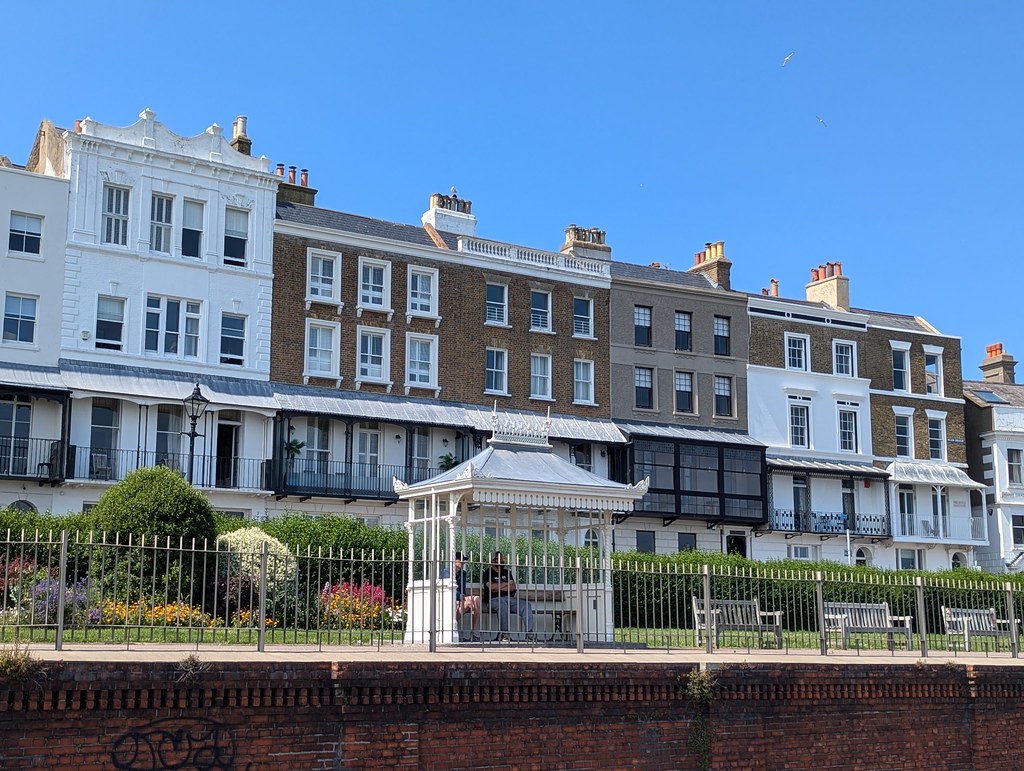
Continue uphill along Royal Parade for more picturesque views of the harbour and looking inland admire the Regency architecture, wrought iron balconies and terraced gardens overlooking the promenade.
The Shrine of St. Augustine and the National Pugin Centre
Continue slightly further uphill until you reach Pugin’s Church of St Augustine which is located just across the road from the seafront. Visiting the church is fascinating as it was the personal project of the renowned 19th century Gothic Revival architect Augustus Pugin who is most famous for designing “Big Ben”, and the interiors of the Westminster Houses of Parliament. He designed the church to be the perfect model of his ‘true principles’ of architecture calling it “my own child”. A leader of the Gothic Revival movement, Pugin built St Augustine’s with his own money and in 1852 died in The Grange, his house next door. He was laid to rest in the church beneath an effigy designed by his eldest son, Edward.
Ramsgate’s illustrious history started in AD 597, when St Augustine landed on the shores of Thanet very close to Ramsgate. His arrival brought Christianity to England for the first time, and his aim was to convert them from their Anglo-Saxon pagan ways.
In recognition of this a Visitor Centre was completed in 2017 documenting the many fascinating tales associated with the site, included are interactive displays and exhibits. Heritage Lottery funding was granted to restore the Church to Pugin’s original designs. The interior is absolutely beautiful and definitely worthy of a visit. Pugin’s Shrine
Take an underground tour through the Ramsgate Railway Tunnels which have been transformed from a derelict railway line and bomb shelter into a fascinating tourist attraction. We joined a two hour tour which began with a short film before heading into the air raid precaution shelters where thousands sought refuge during WWII.
We were handed torches as there is no lighting in parts of the tunnels and were given an opportunity to wear hard hats but advised that this was only necessary for people over 5’10” so neither of us required one. A volunteer guide led us along a one and a half mile stretch of the main tunnel which was slightly uneven underfoot in places so it’s best to wear sensible shoes and a jumper as the temperature is a constant 11 degrees year round. Along the way we paused frequently to learn about the history of the tunnels and of how they saved the lives of local residents during the Second World War.
Ramsgate Tunnels are two and a half miles long and in some places are as much as 27 metres below the surface. The largest of the tunnels, dates back to October 1863 when it was opened as a railway tunnel serving Ramsgate Harbour Station.
The second phase of construction for the tunnels was during the Second World War, when the Mayor of Ramsgate commissioned the construction of a series of tunnels to serve as underground shelters to protect the inhabitants of Ramsgate. Due to Ramsgate’s close proximity to Europe, the town suffered from heavy bombing during the Second World War.
On 24 August 1940, 500 German bombs were dropped on Ramsgate in just five minutes. Despite the heavy bombardment, the deep shelters saved lives and as a consequence only 29 civilians and two soldiers lost their lives. The bombardment on 24th August 1940 destroyed roughly 1,200 homes and, as a result of homelessness, roughly 300 families took to living in the tunnels on a permanent basis.
The tunnels became known as Tunnel Town with shops, barbers, canteens, concerts and even an underground hospital for the homeless. After the end of the war, the tunnels were slowly sealed and abandoned until finally re-opening as a tourist attraction in 2014. A definite ‘must do’ on a visit to the town. Ramsgate Tunnels
Take a stroll:
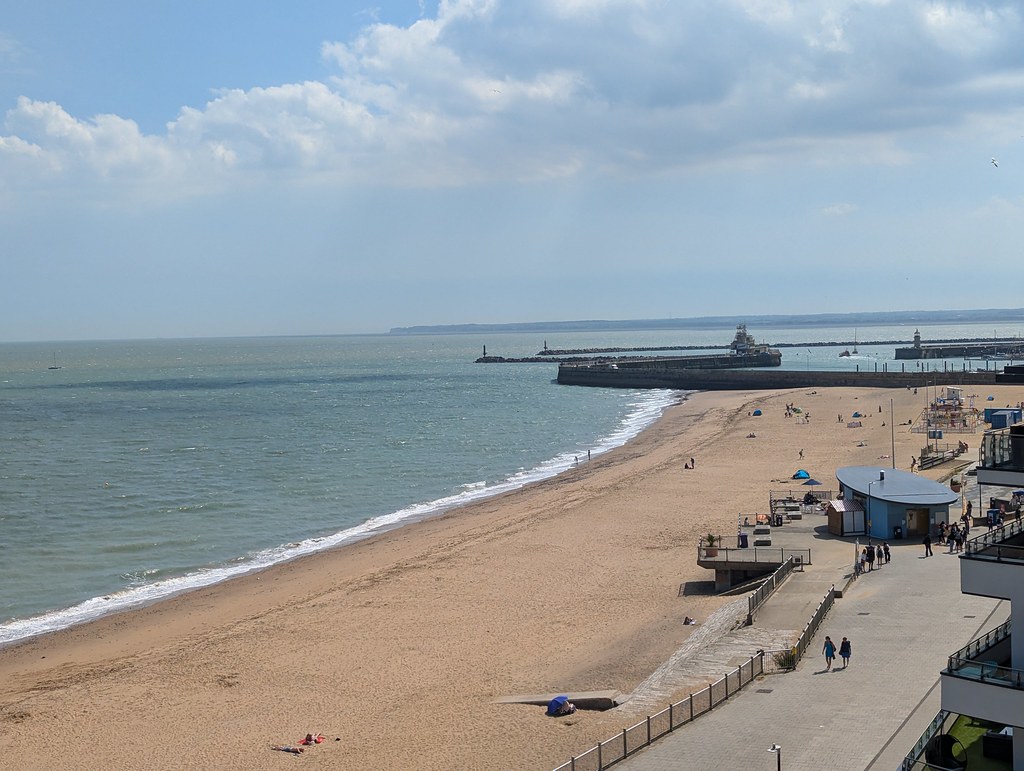
Enjoy a walk along part of the 32 mile (51 km) Viking Coastal Trail starting from the Italianate Glasshouse in King George VI park and onwards to charming Broadstairs. Alternatively head west along the coast to the Pegwell Bay Nature Reserve (see below).
Viking Longship Hugin, Pegwell Bay
Another interesting attraction in Ramsgate is the Hugin Viking ship. This is a replica modern day recreated long ship located at Pegwell Bay. The ship was a gift from Denmark to celebrate the 15th centenary of Hengist and Horsa’s arrival in Kent. These were the leaders of the Anglo-Saxon invasion at Ebbsfleet. The boat was constructed in Denmark and sailed to England in 1949. It was landed at Viking Bay in Broadstairs before being moved to the current site. In 2005 the ship was repaired and it now sits on the cliff top. The boat can only be viewed externally.
Pegwell Bay Country Park
The park acts as the entrance to a nature reserve containing rare flora and fauna that make this an area of national importance. This stretch of windswept coastline includes chalk cliffs, mud flats, saltmarsh and sand dunes and is an important habitat for bird species. Enjoy views of Sandwich and Deal to the west and the cliffs of Ramsgate to the east.
Unleash your creative talent
The Isle of Thanet is known as the creative isle with its abundance of galleries, art studios and workshops. Classes on offer include jewellery, pottery painting, stencil art and ceramics. We enrolled for a Fused Glass Tea Light Holder workshop at the Turner Rowe Art Centre and Gallery which we were excited about as it was something new that we’d never tried previously.
After donning aprons and protective goggles we were guided through the process of designing and creating our own tea light holders from cutting pieces of glass to layering small pieces to create texture and shape.
I have to admit that my creative talents lend themselves more to writing than to art work but I thoroughly enjoyed the two hour experience and by carefully following the tutor’s instructions ended with a piece of glass art to be proud of.
As the fused glass needed to be fired in the kiln we couldn’t take the tea lights home with us that day so arranged to have them posted out later. Turner Rowe Art Centre
Slightly further afield
The Spitfire and Hurricane Memorial Museum
The museum is located at RAF Manston and is free to visit. On display is the Supermarine Spitfire Mk XVI and the Hawker Hurricane IIC alongside many artefacts that help to tell the story of life in Ramsgate during the Second World War.
Alongside the aircraft are a host of objects and artefacts which help tell the story of wartime life. Spitfire and Hurricane Museum
Stay:
We stayed at The Pegwell Bay Hotel located on the outskirts of town, just a 30 minute walk. The hotel is perched on the cliff top enjoying uninterrupted views from its attractive bar and restaurant terraces. Rooms are comfortably furnished with many offering sea views.
With its unrivalled setting the hotel is perfect for a leisurely break being close to town and having the coastal path on its doorstep. The Pegwell Bay Hotel, Ramsgate
Wine and Dine:
Perico Lounge
The newly opened Perico Lounge is part of the Royal Sands development located just steps away from the beach. The interior is decorated with bold, patterned wallpapers, stripped wooden floors, oversized vintage sofas and upholstered lounge chairs in the cosy style of their other lounges. We opted to eat indoors as the evening was turning a little chilly and from our window table enjoyed lovely views out to sea.
The lounge is open throughout the day and our mains of Bang Bang Chicken and Thai Prawn Noodles were cooked to perfection, reasonably priced and very flavoursome. Although our mains were of a generous size we couldn’t resist a dessert and our choices of warm chocolate brownie and sticky toffee pudding were the perfect sweet treats to conclude our evening. Perico Lounge
Royal Victoria Pavilion
A striking example of seaside architecture, this grade II listed building was designed as a concert hall/assembly rooms by architect Stanley Davenport Adshead and was based on the style of a Robert Adam orangery. The interior is said to be derived from the Little Theatre at Versailles and was simplified in the 1930s. After being a nightclub, then a casino, it closed in 2008. The building was purchased by Wetherspoons and has now been restored to its former glory boasting a delightful sun terrace overlooking the harbour. Open throughout the day for food and drinks.


